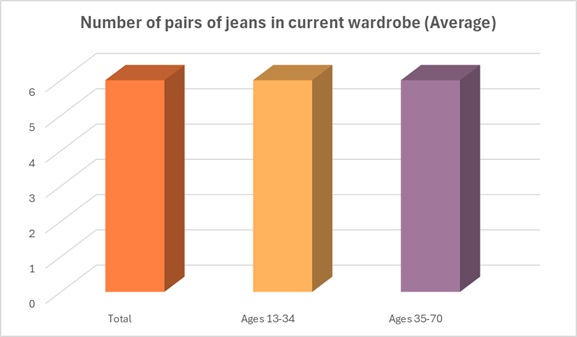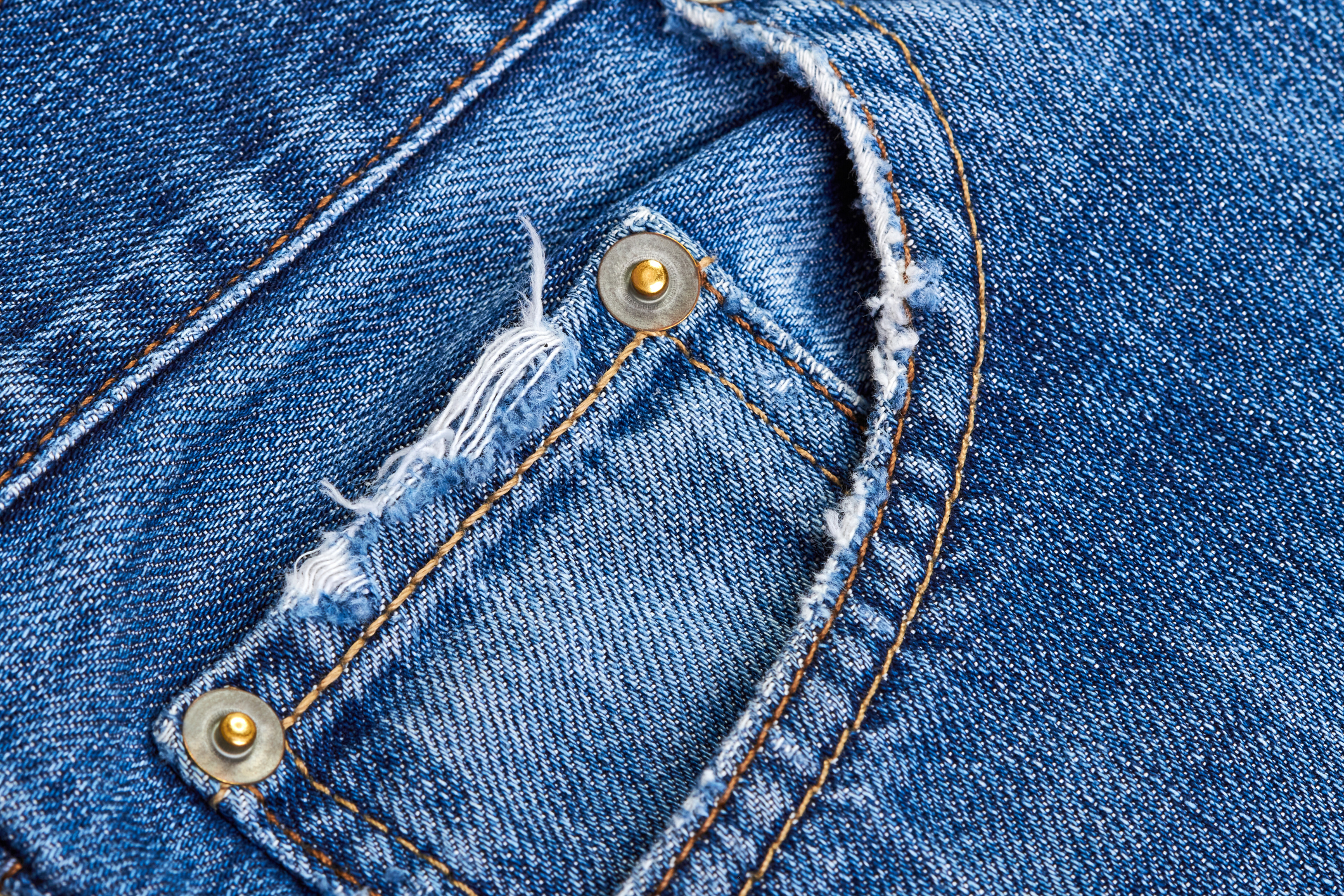Later this month marks the birthday of one of fashion’s most iconic pieces: the blue jean. “Born” on May 20, 1873, this anniversary date is a tribute to the denim bottom’s enduring appeal. And at a time when consumers are prioritizing sustainability, it’s worth noting the significant advancements that have been made in the category.
It might seem funny to think of a garment having an actual birthday. But unlike a lot of apparel pieces that have just evolved over time, it was on that May date 153 years ago that Levi Strauss and Jacob Davis obtained a U.S. patent for the process of putting rivets in men’s work pants for the very first time.
Jeans are so deep in our culture, it’s almost an unstoppable, latent desire. What changes is the shape or look, or the quantities consumed. But demand is there and, while going up and down, will in my life never stop.
Andrew Olah, CEO of Olah Inc. & founder of the Kingpins Show
Born in Bavaria, Strauss had been a dry goods merchant in San Francisco at the height of the Gold Rush. One of his customers was a tailor – Jacob Davis. Denim pants had been worn as workwear for years. But, as Levi history tells it, the wife of a local laborer came to Davis asking for pants that wouldn’t fall apart. Davis designed a denim pant that was reinforced with metal rivets at points of strain, like the pocket corners and the button fly. They were dubbed an instant success. Wisely, Davis thought to take out a patent on the process but to truly scale the manufacturing, he realized he needed a business partner. That’s when he turned to Strauss, the man that sold him the cloth to make those riveted pants. The pair received their patent for “Improvement in Pocket-Openings.”
One of those early pairs of Levi’s jeans now resides in the Smithsonian’s National Museum of American History. And these days, the brand is collaborating with Beyoncé to “highlight the brand’s heritage as inspiration for reinvention.”
Andrew Olah, CEO of Olah Inc. and founder of the Kingpins Show, the denim supply chain trade show, said the reason why denim continues to attract consumers after so many years is intangible.
“Why is salt so popular? Why is ‘Breezin’’ by George Benson so popular? Or Frank Sinatra’s ‘New York, New York?’” Olah posited in an interview with the Lifestyle Monitor™. “For some crazy reason, taste, color, images, memories, dreams and or emotion connects to consumers. I was fascinated by Levi’s and Beyoncé’s 2024 campaign around her album Cowboy Carter, bringing jeans into a kind of new genre, showing how jeans represent a feeling with specific music. Jeans are so deep in our culture, it’s almost an unstoppable, latent desire. What changes is the shape or look, or the quantities consumed. But demand is there and, while going up and down, will in my life never stop.”
As it stands, consumers say they currently have 6 pairs of denim jeans in their wardrobe, according to Cotton Incorporated’s 2025 Lifestyle Monitor™ Survey. And on average, they anticipate buying 2 new pairs in the next year.

This appetite for denim translates into a $29 billion-dollar market in North America, according to Mordor Intelligence. The firm expects the jeans market to grow to $35 billion by 2030.
This summer, forecasting firm WGSN expects sales of women’s denim will be driven by vintage-inspired washes and finishes, according to its “Women’s Denim Wash & Finish S/S ‘25” report. The firm advises brands to capitalize on consumer desire for versatile, long-lasting designs, balancing classic silhouettes with natural fades and authentic worn effects for everyday staples. Pale blues should be among the spring/summer offering. And brands should also offer decorative twists with embroideries and embellishments to lift the female shopper’s denim wardrobe.
Nearly 6 in 10 shoppers (59 percent) say jeans are their first pick for casualwear, according to the Monitor™ research. And nearly three-quarters of consumer (73 percent) say they prefer to go places they can wear jeans. Typically, consumers keep a pair of denim jeans for about 8 years.
The majority of consumers (67 percent) say denim jeans made of 100 percent cotton are the most sustainable or environmentally friendly, according to the Monitor™ research. And more than two-fifths of shoppers (43 percent) say “sustainable/environmentally friendly” are important features to them when purchasing a new pair of jeans.
“There are countless reasons why a jean today is more sustainable than it used to be,” Olah said. “Compared to pre-1995, farmers now have higher yields due to seed innovation, inventions in sprinkler systems use less water on the crop, dyers use less energy and water in dyeing. Chemical companies improved the dyes and finishing. As an industry, I am super proud of our environmental accomplishments and less proud that we don’t document it or share real data with consumers.”
Another concept consumers might be interested: new technologies in denim finishing that provide safer and more sustainable finishing options without sacrificing the look and feel consumers want in their jeans. For example, lasers can quickly and safely mimic the finishing effects of potassium permanganate (PP), creating vintage effects, whiskers, patterns and even intentional holes and tears. It uses less water, chemicals, and energy to create a wide variety of denim looks. On the other hand, traditional PP spray can have harmful effects on workers, irritating and burning the skin and eyes with direct contact. Without safe ventilation, workers are also at risk for short- and long-term health issues when working with this chemical.
Further innovation can be found with NoStone® technology, which is used in place of pumice stones, the traditional tumbling method that gives a faded, worn-out look to denim. The pumice stone method not only damages the washing machines during the process, but there is a higher labor cost involved in removing the residue, dust, and sludge the stones produce. So, in a collaboration with Levi Strauss, Tonello created abrasive stainless-steel drums whose panels can be fastened to any of its machines, and the abrasion is determined by the fineness of the texture of the plate. The plates are removable, so the machines can still be used for normal washing/dyeing processes.
While exciting finishes and embellishments draw consumers to new denim, most shoppers (88 percent) say top features when buying new denim is that the jeans fit them well and are comfortable to wear, according to Cotton Incorporated’s 2024 Global Denim Survey. Other important features include quality (83 percent), durability (82 percent), affordability/value for the money (78 percent), holding its shape (73 percent), stretch (60 percent), performance features (55 percent), classic designs (61 percent), recognizable brand (45 percent), and latest/trendy designs (43 percent).
One thing is certain, with its reputation cemented as a celebrated piece of American fashion, the blue jean is sure to have many more birthdays to come.
